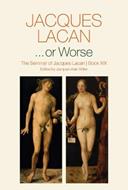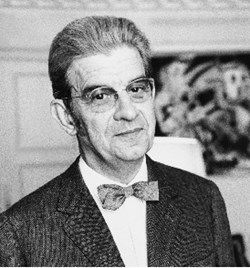L’articolo è stato aggiunto alla lista dei desideri
IBS.it, l'altro eCommerce
...or Worse: The Seminar of Jacques Lacan, Book XIX
Cliccando su “Conferma” dichiari che il contenuto da te inserito è conforme alle Condizioni Generali d’Uso del Sito ed alle Linee Guida sui Contenuti Vietati. Puoi rileggere e modificare e successivamente confermare il tuo contenuto. Tra poche ore lo troverai online (in caso contrario verifica la conformità del contenuto alle policy del Sito).
Grazie per la tua recensione!
Tra poche ore la vedrai online (in caso contrario verifica la conformità del testo alle nostre linee guida). Dopo la pubblicazione per te +4 punti
Altre offerte vendute e spedite dai nostri venditori



Tutti i formati ed edizioni
Promo attive (0)
"A chance meeting of a sewing machine and an umbrella. The impossible face-off between a whale and a polar bear. One was devised by Lautréamont; the other punctuated by Freud. Both are memorable. Why so? They certainly tickle something in us. Lacan says what it is. It's about man and woman. There is neither accord nor harmony between man and woman. There’s no programme, nothing has been predetermined: every move is a shot in the dark, which in modal logic is called contingency. There's no way out of it. Why is it so inexorable, that is, so necessary? It really has to be reckoned that this stems from an impossibility. Hence the theorem: 'There is no sexual relation.' The formula has become famous. In the place of what thereby punctures a hole in the real, there is a plethora of luring and enchanting images, and there are discourses that prescribe what this relation must be. These discourses are mere semblance, the artifice of which psychoanalysis has made apparent to all. In the twenty-first century, this is beyond dispute. Who still believes that marriage has a natural foundation? Since it's a fact of culture, one devotes oneself to inventing. One cobbles together different constructions from whatever one can. It may be better ... or worse. 'There is Oneness.' At the heart of the present Seminar, this aphorism, which hitherto went unnoticed, complements the 'there is no' of sexual relation, stating what there is. It should be heard as One-all-alone. Alone in jouissance (which is fundamentally auto-erotic) and alone in significance (outside any semantics). Here begins Lacan's late teaching. Everything he has already taught you is here, and yet everything is new, overhauled, topsy-turvy. Lacan had taught the primacy of the Other in the order of truth and the order of desire. Here he teaches the primacy of the One in its real dimension. He rejects the Two of sexual relation and that of signifying articulation. He rejects the Big Other, the fulcrum of the dialectic of the subject, disputing its existence, which he consigns to fiction. He depreciates desire and promotes jouissance. He rejects Being, which is mere semblance. Henology, the doctrine of the One, here outclasses ontology, the theory of Being. What about the symbolic order? Nothing more than the reiteration of the One in the real. Hence the abandoning of graphs and topological surfaces in favour of knots made of rings of string, each of which is an unlinked One. Recall that Seminar XVIII sighed for a discourse that would not be semblance. Well, with Seminar XIX, we have an attempt at a discourse that would take its point of departure in the real. The radical thought of modern Uni-dividualism." —Jacques-Alain Miller
L'articolo è stato aggiunto al carrello
Le schede prodotto sono aggiornate in conformità al Regolamento UE 988/2023. Laddove ci fossero taluni dati non disponibili per ragioni indipendenti da IBS, vi informiamo che stiamo compiendo ogni ragionevole sforzo per inserirli. Vi invitiamo a controllare periodicamente il sito www.ibs.it per eventuali novità e aggiornamenti.
Per le vendite di prodotti da terze parti, ciascun venditore si assume la piena e diretta responsabilità per la commercializzazione del prodotto e per la sua conformità al Regolamento UE 988/2023, nonché alle normative nazionali ed europee vigenti.
Per informazioni sulla sicurezza dei prodotti, contattare productsafetyibs@feltrinelli.it
L’articolo è stato aggiunto alla lista dei desideri


